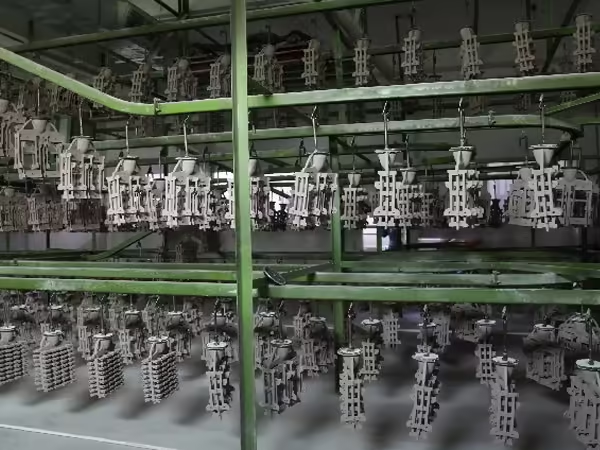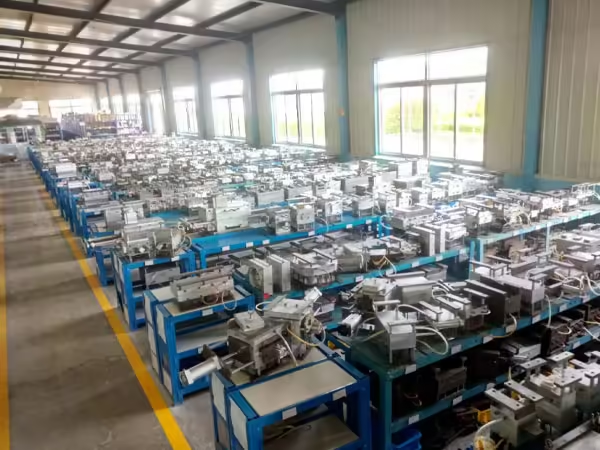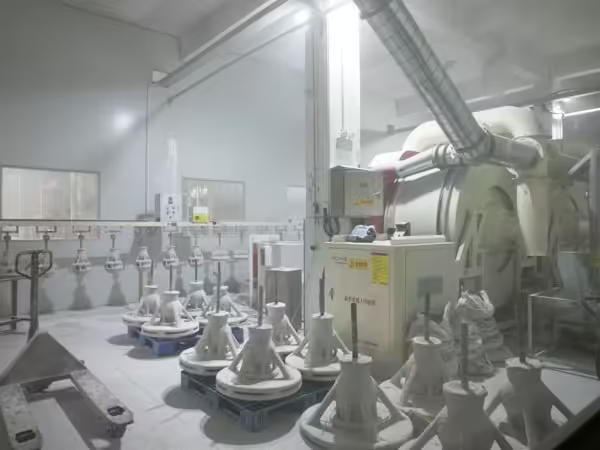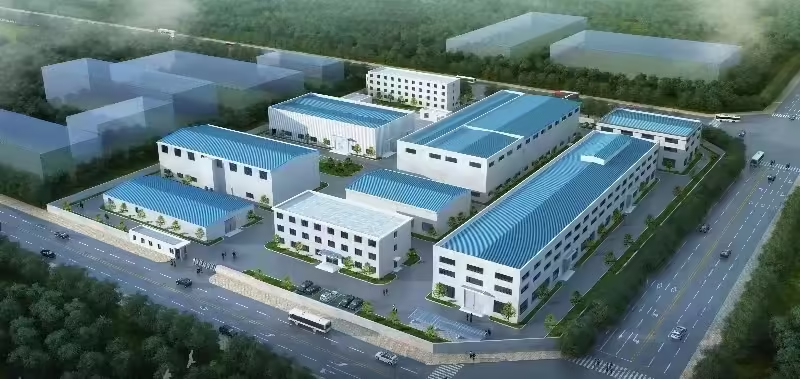10 maneras comprobadas de mejorar la calidad de la superficie de las piezas fundidas de inversión
Tabla de contenido
Introducción

En el mundo de la fabricación y la ingeniería, las fundiciones de inversión se han convertido en una solución crucial para la producción de componentes complejos de alto rendimiento. Los compradores de sectores como el aeroespacial, el automotriz, el médico y el energético exigen no solo precisión dimensional, sino también una calidad superficial uniforme. Si bien se suele prestar mucha atención a la selección de aleaciones, la tolerancia y las capacidades de mecanizado, la calidad superficial de las fundiciones de inversión es igualmente importante. Influye directamente en el rendimiento, los costos de procesamiento posteriores y la durabilidad a largo plazo de las piezas.
Este artículo explora diez maneras comprobadas en que la calidad superficial mejora las piezas de fundición de precisión, basándose en estándares reconocidos, procesos de producción y perspectivas del comprador. Al finalizar, comprenderá cómo la calidad superficial impacta la rentabilidad, el rendimiento funcional y la competitividad general en mercados exigentes.
Por qué es importante la calidad de la superficie Fundiciones de inversión

La calidad de la superficie no es solo una característica estética, sino un parámetro técnico que define el rendimiento de un componente. Un acabado deficiente puede generar puntos de tensión, aumentar la fricción o requerir un costoso mecanizado secundario. Un acabado más liso, por otro lado, reduce la resistencia al avance, garantiza una mayor resistencia al desgaste y minimiza el tratamiento posterior. Para los compradores, esto se traduce directamente en un menor coste total de propiedad y menores riesgos de rendimiento.
Normas internacionales de calidad de superficies en Fundiciones de inversión
Las normas de la industria desempeñan un papel fundamental a la hora de establecer las expectativas de calidad superficial. Organizaciones internacionales como ISO, ASTM y SAE proporcionan parámetros para los niveles de rugosidad aceptables. Los compradores suelen evaluar las piezas fundidas según los valores Ra, que representan la rugosidad superficial media.
Los estándares comunes incluyen:
- ISO 1302:Define la textura de la superficie y los métodos de medición.
- ASTM A802:Especifica los grados de rugosidad de la superficie para piezas fundidas de acero.
- SAE AMS 2175:Se utiliza ampliamente en fundiciones aeroespaciales para la aceptación de defectos visuales y superficiales.
En el caso de las piezas de fundición de inversión, estas normas crean un lenguaje compartido entre proveedores y compradores, garantizando que los acuerdos contractuales sobre la calidad de la superficie sean mensurables y exigibles.
Cómo los patrones de cera afectan la calidad de la superficie en Fundiciones de inversión
El camino hacia una superficie de alta calidad comienza con el modelo de cera. Dado que la fundición a la cera perdida consiste esencialmente en duplicar el modelo de cera en metal, cualquier imperfección del modelo se transfiere al producto final.
Los modelos de cera lisos y sin defectos sientan las bases para superficies de alta calidad. Factores como la presión de inyección de cera, la temperatura del molde y la velocidad de enfriamiento influyen directamente en el detalle de la superficie. Las técnicas modernas de producción de patrones, incluyendo los patrones impresos en 3D, proporcionan una mayor consistencia y minimizan las imperfecciones superficiales, reduciendo así las operaciones de acabado posteriores.
El papel de las carcasas cerámicas en la consecución de superficies lisas
Las carcasas cerámicas son otro factor crítico para determinar los resultados de la superficie. El material de la carcasa debe tener una granulometría fina para reproducir con precisión los detalles de la superficie, a la vez que resiste el agrietamiento durante el vertido del metal. La construcción de alta calidad de las carcasas elimina las inclusiones superficiales y mejora la reproducción de geometrías complejas.
Las carcasas con permeabilidad controlada y espesor de recubrimiento uniforme también promueven una solidificación uniforme, lo que reduce aún más las irregularidades de la superficie. Para los compradores de industrias de alta precisión, especificar la calidad de la carcasa es una forma eficaz de garantizar la excelencia de la superficie.
Defectos superficiales que se encuentran comúnmente en Fundiciones de inversión

Si bien la fundición de precisión ofrece una precisión superior, no es inmune a defectos superficiales. Los problemas comunes incluyen:
- Defectos de quemado causada por la reacción entre el metal y el material del molde.
- Porosidad del gas lo que provoca pequeños hoyos o agujeros en la superficie.
- Erosión por moho que produce rugosidad no deseada.
- Fusión incompleta provocando superficies irregulares o cierres fríos.
La identificación temprana de estos defectos garantiza la implementación de medidas correctivas sin repercutir costos innecesarios en los compradores. Las inspecciones periódicas y las técnicas avanzadas de control de calidad ayudan a los fabricantes a ofrecer acabados superficiales fiables.
Beneficios de una buena calidad de superficie en Fundiciones de inversión
Resistencia al desgaste mejorada
Las superficies más lisas reducen la fricción y el desgaste durante el funcionamiento. En el caso de piezas de automoción y aeroespaciales sometidas a contacto constante o alta tensión, esto mejora directamente la vida útil del componente.
Costos de posmecanizado reducidos
Las piezas de fundición de precisión con excelentes acabados requieren menos esmerilado, pulido o mecanizado. Esto ahorra dinero a los compradores, acorta los plazos de entrega y reduce los desperdicios.
Resistencia a la corrosión mejorada
Las irregularidades superficiales suelen ser puntos de inicio de la corrosión. Una pieza fundida bien acabada resiste mejor los factores ambientales, prolongando su vida útil en condiciones exigentes.
Mejor estética y valor de mercado
En industrias donde la apariencia importa (como hardware de consumo o dispositivos médicos), un acabado de superficie de primera calidad aumenta el valor percibido y la competitividad del mercado.
Comparación de los niveles de acabado superficial en Fundiciones de inversión
| Nivel de calidad de la superficie | Ra promedio (µm) | Áreas de aplicación típicas | Impacto del comprador |
|---|---|---|---|
| Acabado estándar | 6.3 – 12.5 | Piezas de maquinaria general | Adecuado pero puede necesitar mecanizado. |
| Acabado mejorado | 3.2 – 6.3 | Piezas de automoción y energía | Reduce el mecanizado, mejora el desgaste. |
| Acabado Premium | 1.6 – 3.2 | Piezas aeroespaciales y médicas | Alto rendimiento, rentabilidad |
| Acabado de ultraprecisión | <1.6 | Herramientas de defensa y quirúrgicas | Máxima durabilidad, estética. |
Esta tabla muestra cómo los niveles de calidad de la superficie se alinean con el rendimiento funcional y las exigencias de la industria. Los compradores pueden usarla como referencia rápida al especificar requisitos en contratos o documentos técnicos.
Análisis costo-beneficio de invertir en superficies de alta calidad
Si bien los acabados superficiales de primera calidad pueden aumentar los costos iniciales de producción, a menudo reducen los gastos a largo plazo. Menos pasos de mecanizado, menores tasas de desperdicio y una mayor durabilidad contribuyen a un ahorro a lo largo del ciclo de vida.
Por ejemplo, un comprador podría pagar entre 5 y 101 TP3T más por piezas fundidas con acabados premium, pero evitar costos posteriores de retrabajo o tiempo de inactividad que podrían superar este margen varias veces. En términos generales, la inversión en acabados superiores mejora la rentabilidad total del proyecto.
Requisitos de calidad de la superficie en la industria aeroespacial Fundiciones de inversión
El sector aeroespacial exige estándares rigurosos. Los álabes de turbinas, las piezas de motores y los componentes estructurales requieren acabados que minimicen la turbulencia, soporten altas tensiones y resistan la oxidación. En estas piezas, incluso las más mínimas imperfecciones superficiales pueden provocar fallos catastróficos.
Los compradores aeroespaciales suelen especificar rangos de Ra ajustados y exigen documentación completa de los resultados de las mediciones. En este caso, la calidad de la superficie se traduce directamente en seguridad, cumplimiento normativo y rendimiento a largo plazo.
Avances en recubrimientos cerámicos para un mejor acabado
Las recientes innovaciones en la tecnología de carcasas están mejorando aún más la calidad de las superficies. Los recubrimientos con aditivos de nanopartículas, por ejemplo, mejoran la suavidad y reducen las reacciones entre el metal fundido y las superficies de las carcasas.
Para los compradores, esta innovación supone acceso a piezas fundidas con una precisión sin precedentes, lo que reduce la dependencia del mecanizado secundario. Las industrias que adoptan estas tecnologías obtienen una ventaja competitiva al entregar piezas listas para ensamblar con un posprocesamiento mínimo.
Cómo comparar la calidad de la superficie entre proveedores

Al evaluar a los proveedores, los compradores no solo deben solicitar los valores Ra, sino también revisar la consistencia entre lotes. Las preguntas clave incluyen:
- ¿Qué métodos de medición se utilizan para verificar el acabado de la superficie?
- ¿Con qué frecuencia se comprueba la calidad durante la producción?
- ¿Cuál es la tasa de rechazo histórica por defectos superficiales?
Al utilizar estos parámetros de referencia, los compradores pueden seleccionar socios capaces de cumplir constantemente con las expectativas superficiales. Las auditorías de proveedores y las inspecciones de muestras refuerzan aún más la confianza en las decisiones de abastecimiento.
Métodos ecológicos para mejorar la calidad de la superficie
La sostenibilidad cobra cada vez mayor importancia, incluso en las operaciones de fundición. Se están integrando técnicas ecológicas como materiales cerámicos reciclables, sistemas de cera de bajas emisiones y métodos de pulido energéticamente eficientes.
Los compradores se benefician al alinear las estrategias de compras con las regulaciones ambientales y los objetivos de sostenibilidad corporativa, sin sacrificar la calidad.
Conclusión
La calidad de la superficie es un factor decisivo en el rendimiento, el coste y la competitividad de las piezas de fundición de precisión. Desde una mayor resistencia al desgaste hasta una menor necesidad de mecanizado y una mayor resistencia a la corrosión, los acabados superiores ofrecen beneficios tangibles. Al comprender las normas internacionales, evaluar los controles de proceso y colaborar con los proveedores, los compradores pueden garantizar piezas fundidas que aporten valor a largo plazo.
En un mercado global donde la precisión y la eficiencia importan más que nunca, la inversión en la calidad de la superficie no es opcional: es esencial.
PREGUNTAS FRECUENTES
P1. ¿Cuál es la rugosidad superficial típica de piezas de fundición de inversión?
La mayoría de las piezas de fundición de inversión alcanzan valores Ra entre 3,2 y 6,3 µm, aunque las industrias aeroespacial y médica a menudo exigen <1,6 µm.
P2. ¿Una mejor calidad de superficie siempre implica un mayor coste?
No necesariamente. Si bien los acabados premium pueden aumentar los precios iniciales, reducen el mecanizado, los desechos y el tiempo de inactividad, lo que a menudo reduce el costo total de propiedad.
P3. ¿Cómo pueden los compradores verificar la calidad de la superficie?
Los compradores pueden solicitar informes de pruebas de rugosidad de la superficie, realizar inspecciones independientes o utilizar herramientas como perfilómetros para realizar mediciones precisas.
P4. ¿Qué industrias se benefician más de los acabados superiores?
Los sectores aeroespacial, médico, de defensa y automotriz dependen en gran medida de acabados de primera calidad para garantizar la seguridad, la eficiencia y la estética.
P5. ¿Qué papel juega la selección de la aleación en la calidad de la superficie?
Las distintas aleaciones reaccionan de forma distinta a los moldes y a los procesos de acabado. Elegir la aleación adecuada mejora la suavidad y minimiza el posprocesamiento.
Manténgase conectado con nosotros

¡Gracias por leer! Esperamos que este blog te haya brindado información valiosa e inspiración sobre techos con paneles acústicos. Si disfrutaste del contenido y quieres estar al día de las últimas tendencias, consejos y novedades, nos encantaría conectar contigo en redes sociales.
📘 Síguenos en Facebook: Shanghai Leierwo Industria Comercio Co., Ltd.
Únase a nuestra creciente comunidad donde compartimos consejos de expertos, aspectos destacados de los productos y debates interactivos con profesionales y entusiastas del diseño de todo el mundo.
Sigamos conversando, ¡nos vemos allí!
Categorías de productos
- Piezas de válvulas
- Piezas de la bomba de agua
- Piezas de la caja de cojinetes
- Piezas de fundición a presión
- Productos para bombas de acero inoxidable
- Productos para bombas de hierro fundido
- Piezas de válvulas para automóviles
- Recambios para automóviles
- Piezas de válvulas para uso civil
- Piezas de bomba de vacío KF

